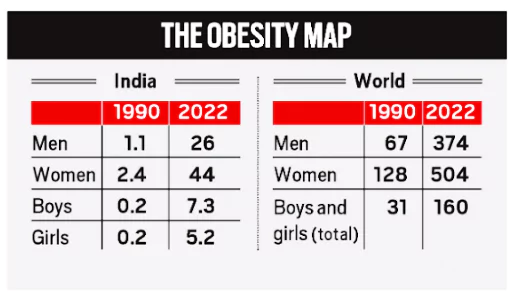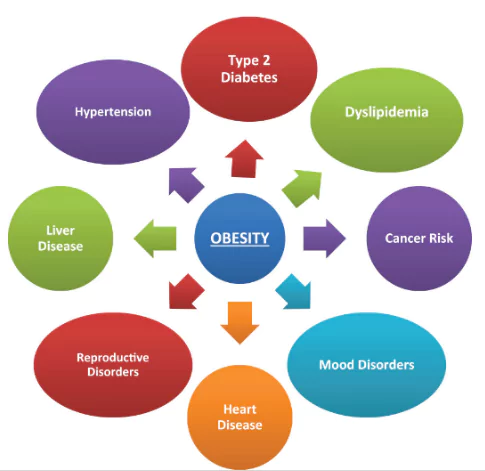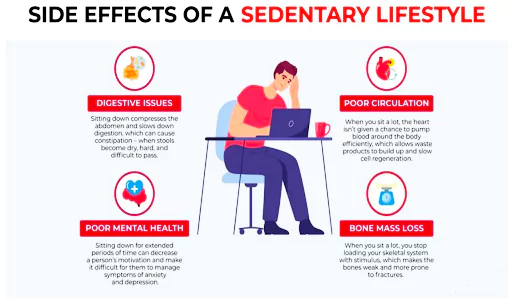Context:
A recent Lancet study has highlighted India’s growing obesity problem, especially among the young population.
Rise of Obesity and Underweight Issues Across Generations in India
-
Alarming Rise in Overweight among Children and Teens:
- Overweight problem: The study showed a new trend of overweight among children and teenagers in India, aged between five and 19.
- According to the study, 12.5 million children (7.3 million boys and 5.2 million girls) in 2022 were overweight.
- The overweight figure was 0.4 million in 1990.
- Rise in obesity percentage: The prevalence of obesity among children and teenagers has climbed to over three per cent, indicating a notable surge compared to figures from 1990.
Obesity
- WHO defines Obesity as an abnormal or excessive accumulation of fat that poses health risks.
- If someone’s body mass index (BMI) is over 25, they are considered overweight; if it’s over 30, they are considered obese.
Underweight
- If BMI is less than 18.5, it indicates an underweight range.
|
-
Status of obesity: 2022 v/s 1990

-
- Obesity is not confined to younger age groups; it is also prevalent in adults.
- Obesity among women: The new study reveals that 44 million women above 20 in India were obese.
- Among women, the prevalence of obesity has seen a sharp rise, with 9.8 per cent now classified as obese.
- It has increased by 8.6 percentage points since 1990.
- Obesity among men: 26 million men aged above 20 in India were found to be obese
- The obesity rate among men has increased to 5.4 per cent, representing a 4.9 percentage point rise over the same period.
-
- Regarding obesity prevalence among women, India ranks 182nd out of 197 countries worldwide as of 2022.
- For men, India holds the 180th position globally.
- Among girls and boys, India is placed 174th on the global scale.
- Problem of Underweight: The study has also highlighted significant undernourishment across all age groups in India.
- Global ranking for underweight: India holds the highest global ranking for underweight girls and the second-highest for boys.
- In 2022, approximately 35 million girls and 42 million boys between the ages of five and 19 were underweight, compared to 39 million girls and 70 million boys in 1990.
- This reflects a seven-percentage-point decrease for girls and a 23-percentage-point decrease for boys over the period.
- Underweight among Adults: Among adults, the number of underweight individuals has decreased as well.
- In 2022, 61 million women and 58 million men were underweight.
- The data shows a decrease in percentage from 41.7 per cent in 1990 to 13.7 per cent for women and from 39.8 per cent to 12.5 per cent for men.

Factors Influencing Obesity Across Age Groups
- Dietary Habits: Unhealthy eating patterns, excessive consumption of processed foods, sugary beverages, and lack of balanced nutrition contribute to childhood obesity.
- Physical Inactivity: Sedentary lifestyles, reduced outdoor play, and limited physical activity play a significant role.
- Screen Time: Excessive screen time (TV, computers, smartphones) reduces physical activity and promotes weight gain.
- Genetics: Genetic predisposition can influence a child’s susceptibility to obesity.
Reasons for rising obesity faster in women:
- Cultural, Socio-Economic, and Biological Reasons: Obesity rates among women are increasing due to a combination of cultural, socioeconomic, and biological factors.
- Barriers to Physical Activity and Limited Access to Healthy Food: Women in traditional settings may encounter obstacles in accessing physical activity and have restricted access to nutritious food options.
- Prioritisation of Family Nutritional Needs: Women often prioritise the nutritional requirements of other family members over their own.
- It compels them towards unhealthy eating habits.
 Limited Healthcare Access and Education: A lack of access to healthcare and education regarding obesity and healthy lifestyle choices further contributes to the rising obesity levels in women.
Limited Healthcare Access and Education: A lack of access to healthcare and education regarding obesity and healthy lifestyle choices further contributes to the rising obesity levels in women.- Biological Influences: Biological factors such as pregnancy and menopause uniquely impact women’s weight, potentially leading to weight gain.
- Significant Increase in Sedentary Activity: Surveys conducted in rural areas have highlighted a notable increase in sedentary activity, rising from 34 percent in 1975-79 to 74 percent by 2012.
- It has caused a higher prevalence of obesity.
News Source: Indianexpress
![]() 1 Mar 2024
1 Mar 2024


 Limited Healthcare Access and Education: A lack of access to healthcare and education regarding obesity and healthy lifestyle choices further contributes to the rising obesity levels in women.
Limited Healthcare Access and Education: A lack of access to healthcare and education regarding obesity and healthy lifestyle choices further contributes to the rising obesity levels in women.